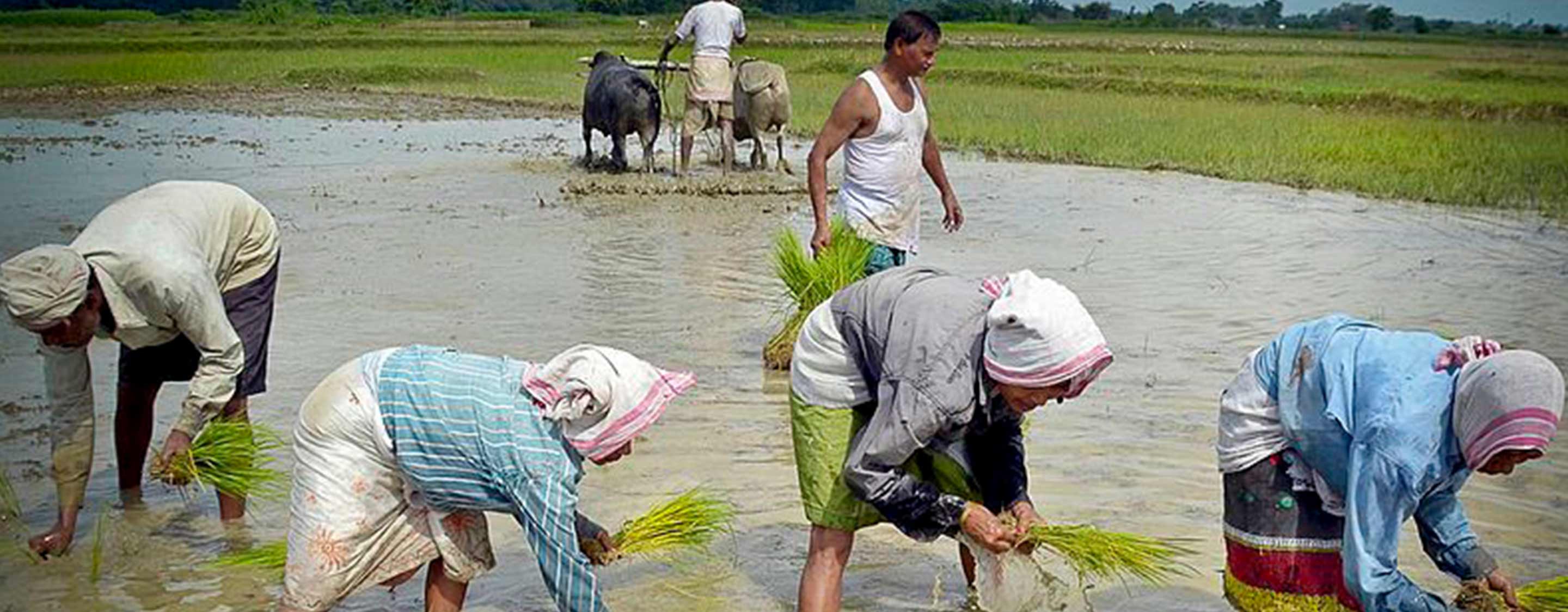The benefit of MSP is limited to only 5.8 per cent of farmers in India.
The Minimum Support Price (MSP) is a floor price decided by the Central and State governments at which they procure crops from farmers. MSP’s aim is to protect farmers against the sharp decline in the agricultural prices during good harvest seasons.
Currently, the Central government has fixed MSP of over 50 per cent of the cost of production for 24 crops. However, the effectiveness of MSPs is limited to mostly rice and wheat which are largely produced in Punjab, Haryana, and Uttar Pradesh.
Here are some reasons why MSPs are not a solution to the distress in the agriculture sector –
The minimum support price fixed on any crop attracts farmers to produce that specific crop which leads to its over-production. In this case, farmers end up growing crops which they shouldn’t be growing. For example, the MSP on paddy (common) in Punjab increased from ₹1470 per quintal in 2016-17 to ₹1550 per quintal in 2017-18 giving an incentive to farmers to produce rice instead of more economically beneficial crops.
The production of 1 kg of rice needs at least 5,000 litres of water. An over-production of paddy adversely affected the groundwater management in Punjab. Because of MSP farmers reduced the production of crops which were less water-intensive. Punjab contributed around 27 per cent of total rice procured by the central government in the year 2016-17 from 25.7 per cent in 2015-16.
According to Price Policy of Kharif Crops, the most efficient state for production of paddy is West Bengal as it requires only 2,169 litres of water to produce 1 kg of rice due to the quality of soil, along with Assam with 2,432 litres of water and Karnataka with 2,635 litres of water. The question arises that why Punjab is growing so much of rice as it requires a much higher consumption of water for its production?
Another reason the benefits of MSP have not reached to farmers is the lack of procurement facilities and over-production. As per 70th Round, National Sample Survey, only 13.5 per cent of paddy farmers disposed of their produce to Food Corporation of India or any other state procurement agency. Only 16 per cent of wheat farmers sold their produce to any procurement agencies. These state and central agencies are procuring more than what is required. The government should use the money for other productive purposes rather than buying surplus crops.
The MSP also leads to wastage of crops. The government sell the procured crops through the Public Distribution System at subsidised rates. The excessive leakages in the system lead to wastage of more than 45 per cent crops slated for distribution.
MSP distorts the market because the government procurement agencies buy 70-80 per cent of wheat and rice by forcing out private players. This leads to an increase in the price of crops. If the government sets MSP higher than the market rates, then private players won’t buy crops from farmers and the crops are procured by the government. Which creates inefficiencies in the markets. The farmers stop producing other crops on which there is no fixed MSP eventually, the price of those crops rise which leads to inflation.
The benefit of MSP is limited to only 5.8 per cent of total agricultural households in India. If the government really wants to reduce the distress of farmers rather than giving them temporary reliefs, then they should free-up the farmers. Farmers should be free to decide that what to produce, the price of their crops and to whom they should sell their produce.

